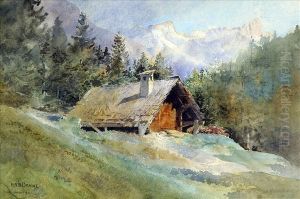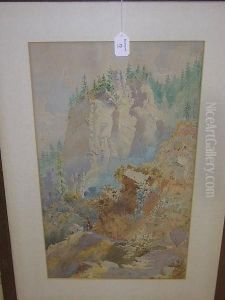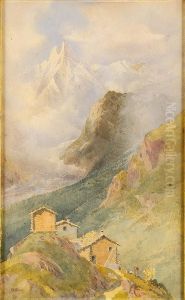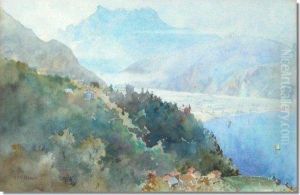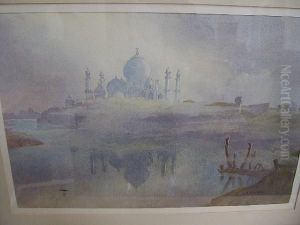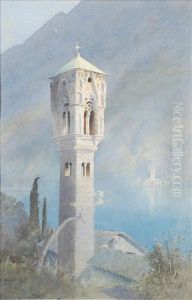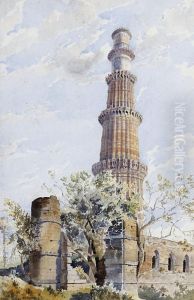Henry Richard Beadon Donne Paintings
Henry Richard Beadon Donne was an English landscape painter and art educator whose life and career spanned much of the 19th century, a period marked by significant transformation in the arts in Britain. Born in 1807, Donne emerged from a context that was witnessing the Romantic movement's peak, with artists turning towards nature for inspiration and a means to express the sublime. Although not as widely recognized as some of his contemporaries, Donne's work and contributions to art education were notable during his lifetime.
After receiving his education, which likely included formal art training given the skill and technique evident in his paintings, Donne embarked on a career that saw him exploring various parts of England, capturing its rural landscapes and historic sites with a sensitivity and attention to detail that were characteristic of the era's artistic endeavors. His paintings often depicted serene natural scenes, imbued with a sense of tranquility and a deep appreciation for the natural beauty of the English countryside.
In addition to his work as a painter, Henry Richard Beadon Donne made significant contributions to art education. He was actively involved in the burgeoning movement to make art education more accessible and was part of the discussions on how best to incorporate art and design into the broader educational curriculum of the time. His efforts were part of a larger 19th-century initiative to improve public taste and encourage the appreciation of beauty in both natural and manufactured objects, a movement that would eventually lead to the establishment of art schools and the professionalization of art education in England.
Donne's life and career were reflective of the broader transitions in the art world during the 19th century, from the Romantic emphasis on the emotional and sublime aspects of nature to the increasing institutionalization of art education. He passed away in 1882, leaving behind a legacy that, while perhaps not as celebrated as some of his peers, contributed to the rich tapestry of English art history. His works and efforts in art education remain a testament to the vibrancy and dynamism of the 19th-century English art scene.
